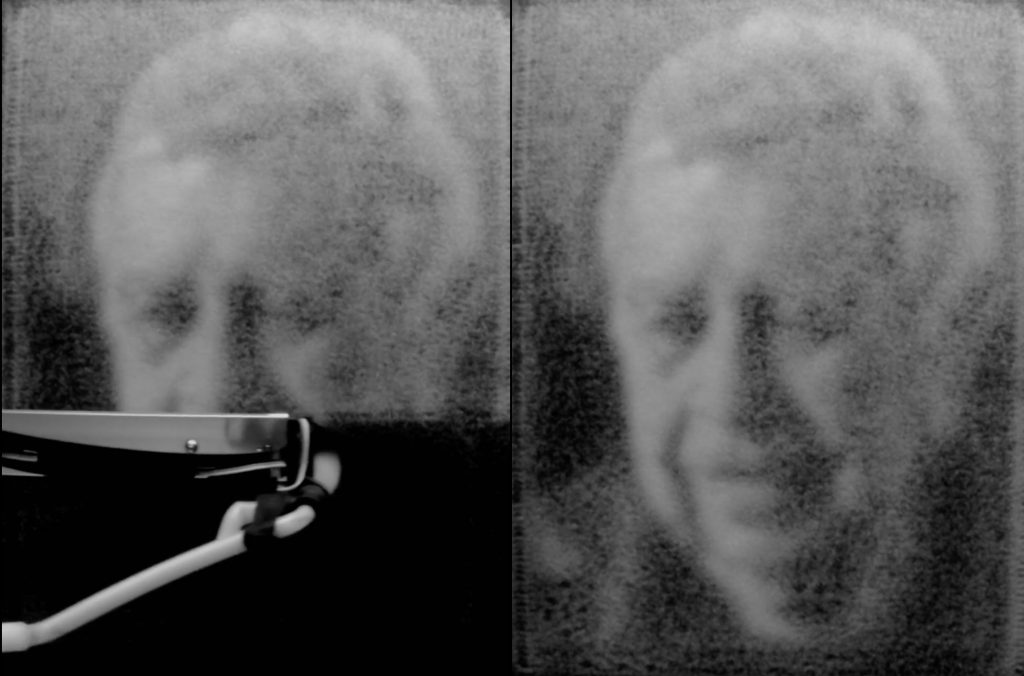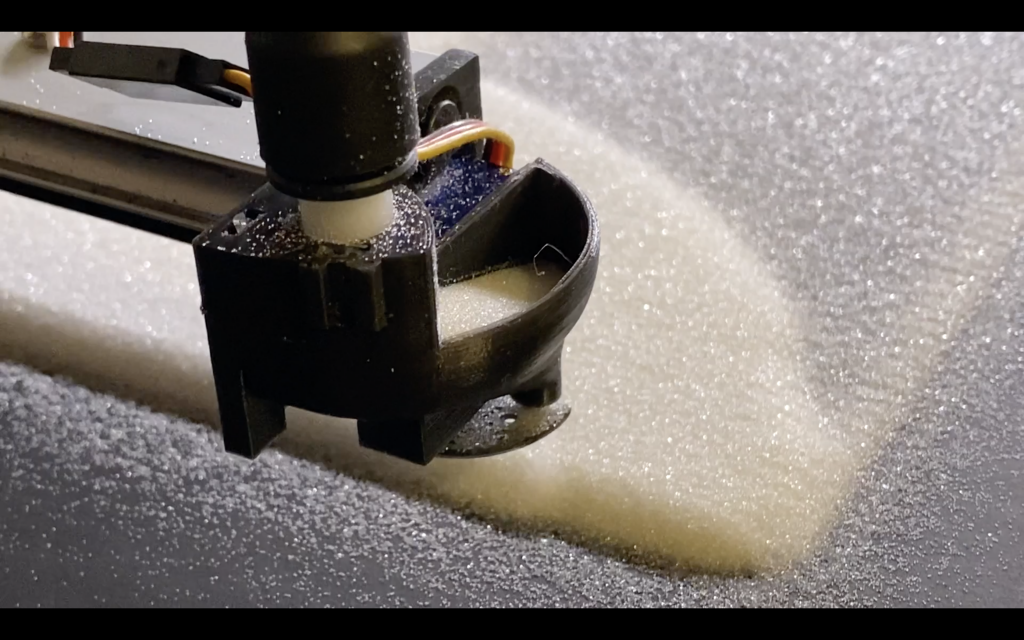On View
Artist Rafael Lozano-Hemmer Is Building a Remarkable and Poetically Fleeting Memorial to Those Lost to the Coronavirus
Each portrait in his latest project is slowly erased once it has been completed.

Each portrait in his latest project is slowly erased once it has been completed.

Taylor Dafoe

The COVID-19 pandemic has not only killed nearly 1.3 million people worldwide—it has also made rituals of collective bereavement dangerous and practically impossible.
“It’s not natural,” says artist Rafael Lozano-Hemmer, whose native country of Mexico is home to a particularly festive form of honoring the departed. “People feel like they’ve been suspended.”
A new artwork by the Mexico City-born, Montreal-based artist proffers a poetic alternative tailor-made for this globalized, techno-mediated moment.
For the work, Lozano-Hemmer developed an AI-operated machine that transforms user-submitted photographs of the deceased into temporary portraits plotted out in grains of sand.
On a live stream, viewers can watch as the images take shape in the artist’s studio across 30 minutes, as a robotic arm methodically deposits granules until a figure coalesces.

Rafael Lozano-Hemmer, A Crack in the Hourglass (2020), detail. Courtesy of the artist.
But just as quickly, the board tilts forward, the sand slips, the image dissolves, and only a black backboard remains.
“That’s what helps you understand that this is over, and that you need to let go,” Lozano-Hemmer tells Artnet News.
The title of the work, A Crack in the Hourglass, is a central metaphor about our broken sense of time in the pandemic.
“What happens if the hourglass has a fissure and sand starts to empty out?” Lozano-Hemmer told Artnet News. “More importantly, how can we move the hourglass to collect the sand that’s been lost [to put it] into something that’s meaningful?”
The project was commissioned by the Museo Universitario Arte Contemporáneo in Mexico City and was originally intended to be installed on site. But the logistical realities of the pandemic soon made that impossible. (The museum is officially closed for the rest of the year.)
As an alternative, Lozano-Hemmer devised a digital platform that would allow users to submit photos of the dead accompanied by personalized dedications.
The pivot makes sense: the online format has shifted the work from a local memorial in Mexico City, to a more widely accessible snapshot of the pandemic writ large.
On the project’s website, you can scroll through the archive of portraits already completed. As of November 12, around 50 portraits have been made. (The project launched on November 7.)
Critically, the sand is recycled for each portrait—a reminder, Lozano-Hemmer says, that in death we’re all equal.
Perhaps more meaningful, though, is that the artwork brings people together, which is harder—and more crucial—than perhaps ever before.
Watch A Crack in the Hourglass live, or submit your photo, at www.acrackinthehourglass.net.